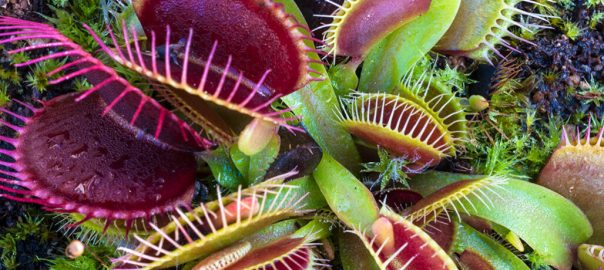

Venus Flytrap
9.99$
15 x / pack
Venus flytrap (Dionaea muscipula) is a carnivorous plant native to subtropical wetlands along the east coast of the United States in North Carolina and South Carolina. It catches its prey, mainly insects and arachnids, with a trapping structure formed by the terminal part of each of the leaves of the plant, which is triggered by tiny hairs (called “trigger hairs” or “sensitive hairs”) on their inner surfaces.
When an insect or spider crawling along the leaves makes contact with a hair, the trap prepares to close, only closing again if another contact occurs within about twenty seconds of the first strike. Triggers can occur if one tenth of the insect is in contact. The requirement for redundant triggering in this mechanism serves as a safeguard against wasting energy by trapping junk objects, and the plant will only begin digestion after five additional stimuli to ensure it has caught a live insect worth eating.
Germination tips:
If you are new to carnivorous plants, use ONLY distilled water / reverse osmosis or rainwater.
1. Make sure the peat moss has no added fertilizer and is as clean as possible.
2. Gently sprinkle the seeds on a washed and evenly moist layer of peat, do not cover them.
Optional: Lightly mist 3% hydrogen peroxide to reduce risk of fungus growth and provide oxygen to seeds.
4. Provide a warm temperature for the seeds, 19°C – 26°C (66°F – 79°F)
5. The seeds will need regular lighting to germinate, 6 – 12 hours a day under artificial light is recommended.
6. Keep the peat evenly moist (NOT soggy) throughout the germination period
7. Seeds should start to germinate in 2-5 weeks when conditions are right. Please be patient.
8. Avoid: Over-watering from above, drastic temperature/humidity changes, sun exposure, fertilizer
9. If you plan to sow the seeds later, it is best to store them in your refrigerator at 2°C – 5°C (35°F – 41°F)
In stock

